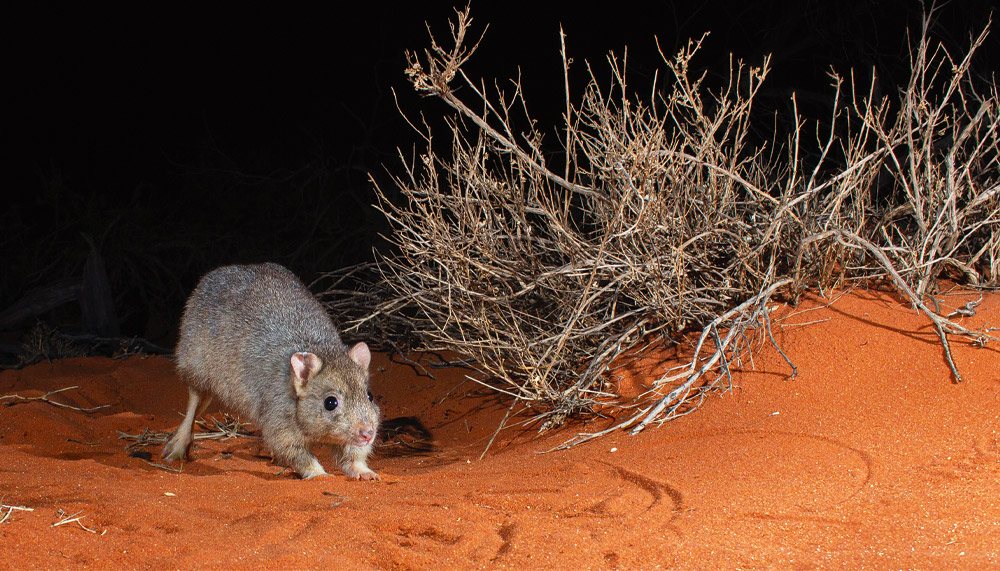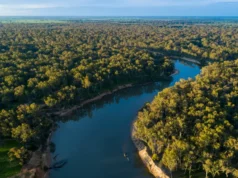
Photo credit: Jannico Kelk
It’s early evening in the remote, arid inland of South Australia, and Dr Katherine Moseby has just opened a fresh jar of peanut butter. She takes a spoonful and mixes it with rolled oats, then baits her traps. This tasty mixture is irresistible to bilbies, burrowing bettongs and western barred bandicoots – small native marsupials that bounce through the desert, digging up food in the dry, red soil. Katherine is a research fellow with the University of New South Wales’ Centre for Ecosystem Science, and one of the founders of Arid Recovery, an organisation that’s bringing biodiversity back to depleted country. Here, native animals not seen in the wild for decades have been given a second chance, safe from the foxes and feral cats that have decimated their populations across mainland Australia.
Arid Recovery’s 123sq km fenced predator-proof reserve is not far from BHP’s Olympic Dam uranium mine, 550km north of Adelaide, but tonight Katherine is interested in a different type of digging. The small marsupials she’s trapping are known as “ecosystem engineers”, because of the remarkable benefits their digging brings. By turning over the soil in search of food, the animals increase nutrient recycling, making those nutrients more available to plants. Their diggings also allow the soil to absorb more water and incorporate organic matter, and spread the spores of fungi essential for the health of trees and vegetation. Once collectively known as ‘rat kangaroos’, the animals were abundant across Australia prior to European times. Habitat clearing and the introduction of feral predators all but wiped them out. Now, a dedicated network across the country is helping to restore native ecosystems by reintroducing them into fenced-off safe zones, in the hope that one day they can be returned safely to the wild.
Early next morning, while the desert is still dark, Katherine leaves her camp to check the traps. Bettongs are easy to trap and docile enough to be weighed, measured, tagged and given a health assessment. “We release them back where we trap them,” Katherine says. “By seeing how many we recapture, we can estimate their numbers.”
Arid Recovery is undertaking a major study to determine to what extent bettongs are getting wise to feral cats. Within the reserve is a 24sq km fenced section where cats are allowed to prowl. “We wanted to see if we could get improvement in their anti-predator responses over time, through either learning or accelerating natural selection,” Katherine says. “We’ve definitely seen an improvement in their awareness of predators. They are harder to approach, more wary. We’re also seeing them getting larger, and we’re hoping to find out if these differences are hereditary.”
For Katherine, the reward is seeing this piece of land go from being inundated with rabbits (prior to the calicivirus there were around 600 rabbits per square kilometre) to something resembling a natural ecosystem.
“I love walking around Arid Recovery and seeing how things used to be – bilby tracks across the sand dunes, animals where they should be,” Katherine says…
Read the full story in Outback magazine issue #132 Aug/Sep 2020


